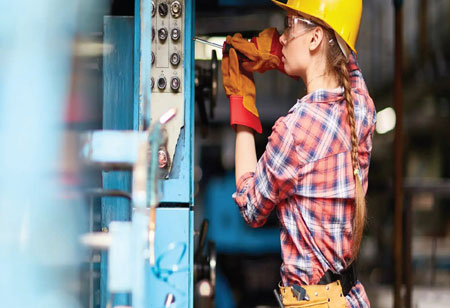
How the Pandemic Is Accelerating the Pace of Digital Transformation for a Hyperconnected Industrial World


Ravi Gopinath, Chief Cloud Officer & Chief Product Officer, AVEVA, 0
As the world begins to recalibrate itself after the pandemic, businesses have undergone a radical and irreversible shake up of the status quo. The crisis, while extraordinarily unprecedented and challenging, offered radical insights into running and optimizing organizations in unpredictable times. Put simply, the crisis showed how oil and gas enterprise operations could be upended almost overnight. Workforce routines, supply chains, essential maintenance and parts movement were disrupted, while border closures and an unprecedented drop in demand squeezed already tight economic operations. To thrive in this brave new world, energy players were compelled to respond with transformative action. As such, the crisis has fast-forwarded the digital transition of the industrial sector by around five years. Several developing technologies are set to underpin a sustainable, optimized and streamlined future for the energy industry.
Cloud Computing
The industrial sector is rapidly digitizing. Companies that were initially hesitant to migrate to the cloud were compelled to make their move amid the pandemic, and now they are seeing transformational benefits. Cloud adoption is accelerating rapidly globally industrial data volumes are set to treble in the next four years, topping 159 Zettabytes by 2024, according to IDC data. Energy giants like BP, Shell and Equinor are all accelerating their cloud programs, while Chevron is set to go cloud only this year. By leveraging Cloud, companies can integrate standalone products, linking AI modules together into a broader intelligence for more efficient performance. With integrated systems comes integrated analysis.
Artificial Intelligence (AI)
As AI becomes more sophisticated, with wider use cases, it allows organizations to improve productivity and make better decisions. With unified smart analytics that bridge complete data stacks, teams can leverage mathematical thought processes across all their activities. A recent IDC report predicts that in accelerating digitization efforts, worldwide spending on AI systems will reach $98 billion by 2023, more than two and a half times the spend in 2019.
Machine Learning (ML)
By leveraging the power of machine learning, it is also possible to transform asset performance. Using a knowledge graph a data map of the entire asset that uses AI and machine learning to build connections the software comes to understand over time the critical processes and components needed for optimum asset management. The knowledge graph uses this information to help define the asset's safe operating envelope, and to automatically notify the owner of key thresholds for safety, performance or other metrics are being met or exceeded.
Connected Workforce
The impact of pandemic driven worker lockdowns has forced industrial organizations across the globe to rapidly accelerate their migration to digital. With the help of technologies like cloud, the industrial internet of things (IIoT), digital twins, and AI, companies are overcoming supply chain, production, and distribution complexity obstacles by linking core processes into a unified remote digital environment. For example, ENEL, an Italian multinational energy company, recently developed a semi autonomous plant using AVEVA digital twin technologies. This enabled them to transition 30,000 of their workers in Italy to a remote working model literally overnight. Key information from their core onsite systems was migrated to the cloud without any disruption to their operations.
Multi Experience & Data Visualization
Multi experience and data visualization are driving new value for our customers. These innovative technologies allow companies to visualize a single operating view in 1D, 2D, 3D, real time, or fully immersive virtual reality environment. For example, Abu Dhabi headquartered ADNOC one of the largest oil companies in the world by production is now saving £100 million each month through a remote AVEVA installation. Its Unified Operations Centre (UOC) allows the organization to see new value opportunities for the first time even in brownfield operations.

Partnering for the Future
Companies are leveraging tech to optimize everything from flares and construction to operating procedures and decision-making. As the industry begins to adapt and adopt technology at unprecedented speed, what people now need above all is trust and partnership. Amid the pandemic, we saw resurgence around giving the right people the tools to do their job, harvesting data, and predicting when facilities will fail. In this new landscape, partnership is being prized. There is a growing sense of comradeship between the technology sector, EPCs and OOs. I predict there will be growing cross industry collaboration across horizontal data and the development of standards.
People & Data above All
Even in times of rapid change, energy companies' two most valuable assets remain their people and their data. By integrating human insight and operational information, the way that we design, build, and run assets can evolve to be more efficient, intelligent, and sustainable.
The impact of pandemic driven worker lockdowns has forced industrial organizations across the globe to rapidly accelerate their migration to digital. With the help of technologies like cloud, the industrial internet of things (IIoT), digital twins, and AI, companies are overcoming supply chain, production, and distribution complexity obstacles by linking core processes into a unified remote digital environment. For example, ENEL, an Italian multinational energy company, recently developed a semi autonomous plant using AVEVA digital twin technologies. This enabled them to transition 30,000 of their workers in Italy to a remote working model literally overnight. Key information from their core onsite systems was migrated to the cloud without any disruption to their operations.
By leveraging cloud, companies can integrate standalone products, linking ai modules together into a broader intelligence for more efficient performance
Multi Experience & Data Visualization
Multi experience and data visualization are driving new value for our customers. These innovative technologies allow companies to visualize a single operating view in 1D, 2D, 3D, real time, or fully immersive virtual reality environment. For example, Abu Dhabi headquartered ADNOC one of the largest oil companies in the world by production is now saving £100 million each month through a remote AVEVA installation. Its Unified Operations Centre (UOC) allows the organization to see new value opportunities for the first time even in brownfield operations.

Partnering for the Future
Companies are leveraging tech to optimize everything from flares and construction to operating procedures and decision-making. As the industry begins to adapt and adopt technology at unprecedented speed, what people now need above all is trust and partnership. Amid the pandemic, we saw resurgence around giving the right people the tools to do their job, harvesting data, and predicting when facilities will fail. In this new landscape, partnership is being prized. There is a growing sense of comradeship between the technology sector, EPCs and OOs. I predict there will be growing cross industry collaboration across horizontal data and the development of standards.
People & Data above All
Even in times of rapid change, energy companies' two most valuable assets remain their people and their data. By integrating human insight and operational information, the way that we design, build, and run assets can evolve to be more efficient, intelligent, and sustainable.